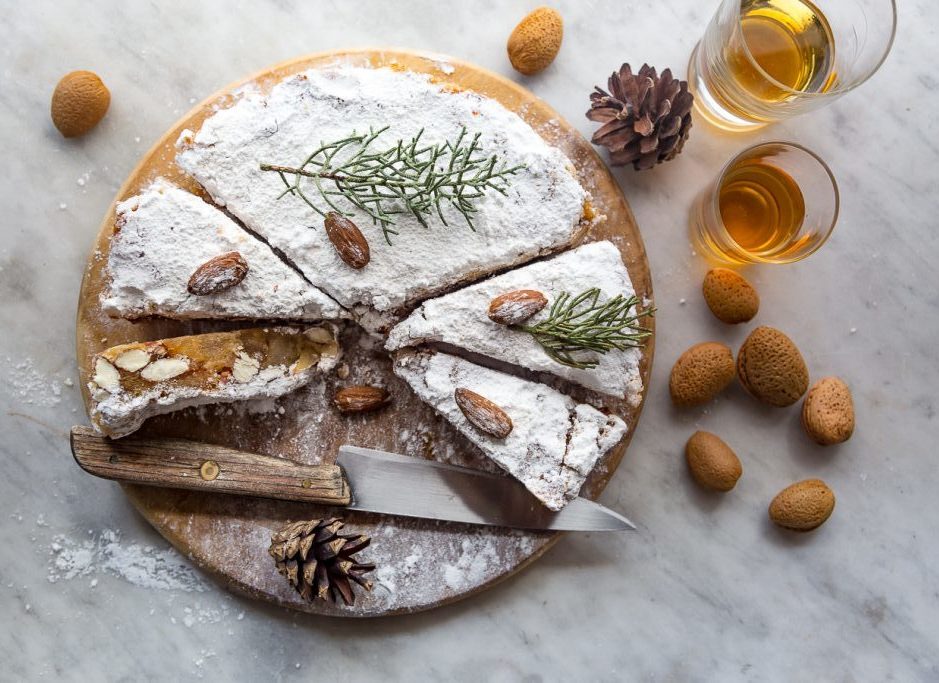Panforte is a delicacy from Tuscany.
What Are the Origins of this Delicious Italian Sweet?
This famous Italian dessert has a long history which dates back to the Middle Ages, a symbol of traditional gastronomy from Siena. As legend has it, servants and pilgrims originally brought it as a gift to the nuns of the Montecelso Abbey. They made this delicious confection for the elite and royalty, because it was rich with honey and spices.
Only later it reached Rome and the rest of Italy as a widespread confectionery treat.Ugo Foscolo, the famous Italian poet, loved it so much that he wrote of it in his letters. Panforte is a dessert typical of the Christmas festivities, but you can find it all year in the best sweets shops. It is the perfect foodie gift, alongside panettone, home-made liquors and of course, some artisan-made Lavolio chocolate gift box.
A Protected Dessert
Originally Panforte resembled honey-based focaccia, and because of this they started calling itpan mielato, “honeyed bread”. Afterwards, they enriched it with fruits, which started fermenting due to the heat. Because of this, the dessert acquired a more acidic flavour and the name changed topanforte,“strong bread”. The ingredients changed over time to avoid the fermentation of the fresh fruits; they prepared this sweet bread only during the colder months, and it became typical of the winter period.
Today there are many variations of this Tuscan pudding. However, the PGI (Protected Geographical Indication) “Panforte di Siena” applies uniquely to a dessert which responds to very particular requirements and specifications, setby the Italian government and theMinistry of Agricultural, Food and Forestry Policies.
andied Fruits, Nuts, Honey and Spices: Panforte Ingredients
Panforte’s batter consists of flour, candied fruits, nuts, a mixture of sugars, honey and spices. It can be of two different varieties:bianco,“white” variety, if the glaze is powdered sugar-based;nero,“black” variety, if the glaze is spices-based. The flavour of this famous Italian confectionery is sweet with the lingering taste of candied fruits and almonds. The fragrance of spices is quite light in the white version and very intense in the black version.
Almonds have to be whole sweet almonds, without peels, not constituting any less than 18% of the batter; at Lavolio we know a thing or two about this fantastic nut. In our Italian sweets we only use certified almonds from Toritto, in southern Italy. They are exceptionally tasty and also have great nutritional benefits.
Candied fruits must include candied cedar -imagine the lovely freshness of our Fruit Garden’s Citrus Fruit sweets- and candied orange, just like the wonderful hearts of candied orange inside Decadent Spiced’ Orange and Saffron sweets. In the black version, it’s obligatory to also add to this mixture candied melon, the famouspoponeas it’s called in the Tuscan dialect, and sweet black pepper.
It must contain honey, and specifically,miele millefiorialso known as “thousand flowers” honey. This is delicate honey with the colour of amber, which comes from varied types and quantities of different flowers. Miele millefiori is one of the most beloved, high-energy and well-rounded kinds of honey in terms of flavour.
While the protected denomination dessert must have specific ingredients and amounts, each and every Italian family has their own beloved recipe. However you decide to make it, you are sure to love this famous Italian dessert and its rich and sweet fragrance.



